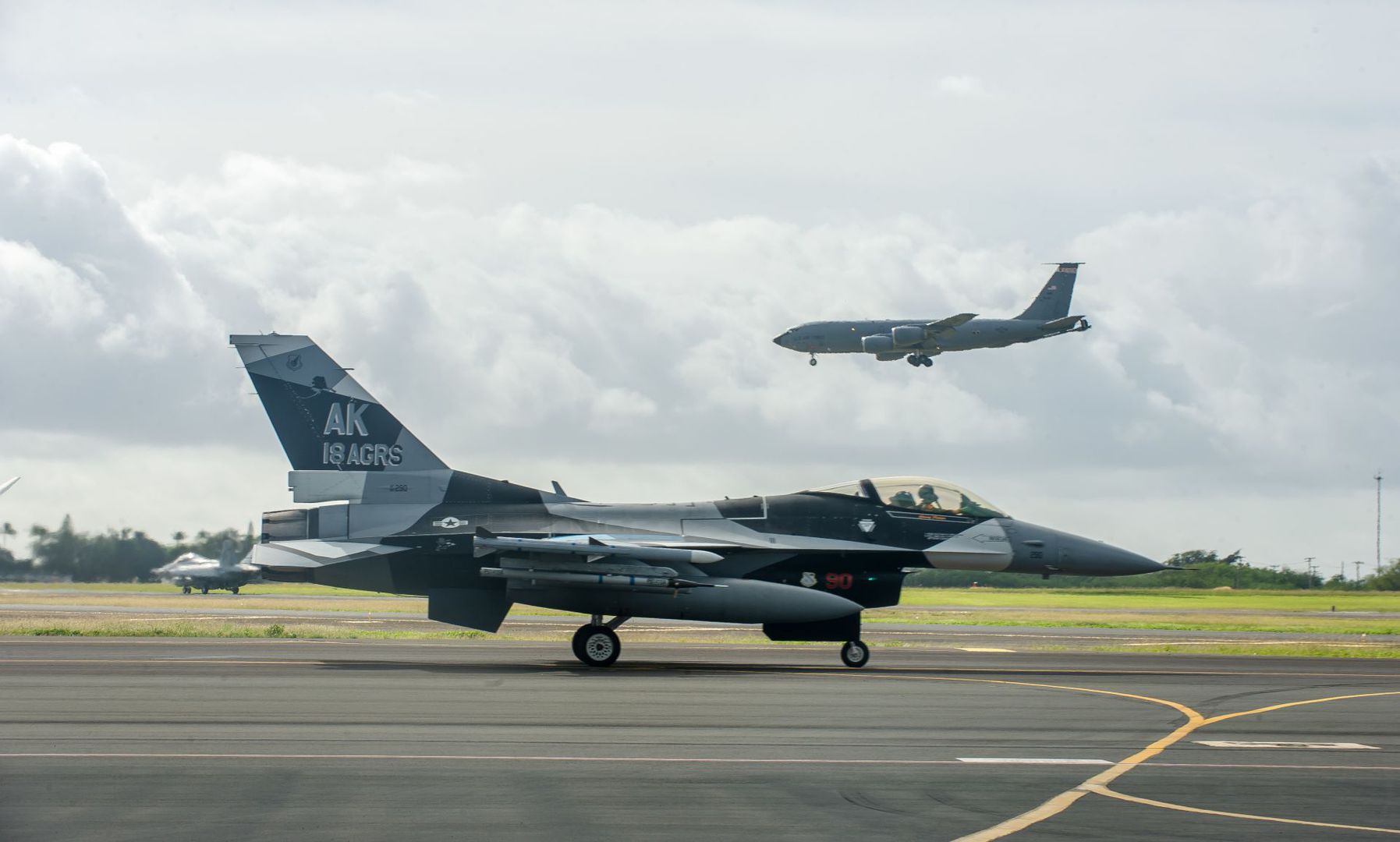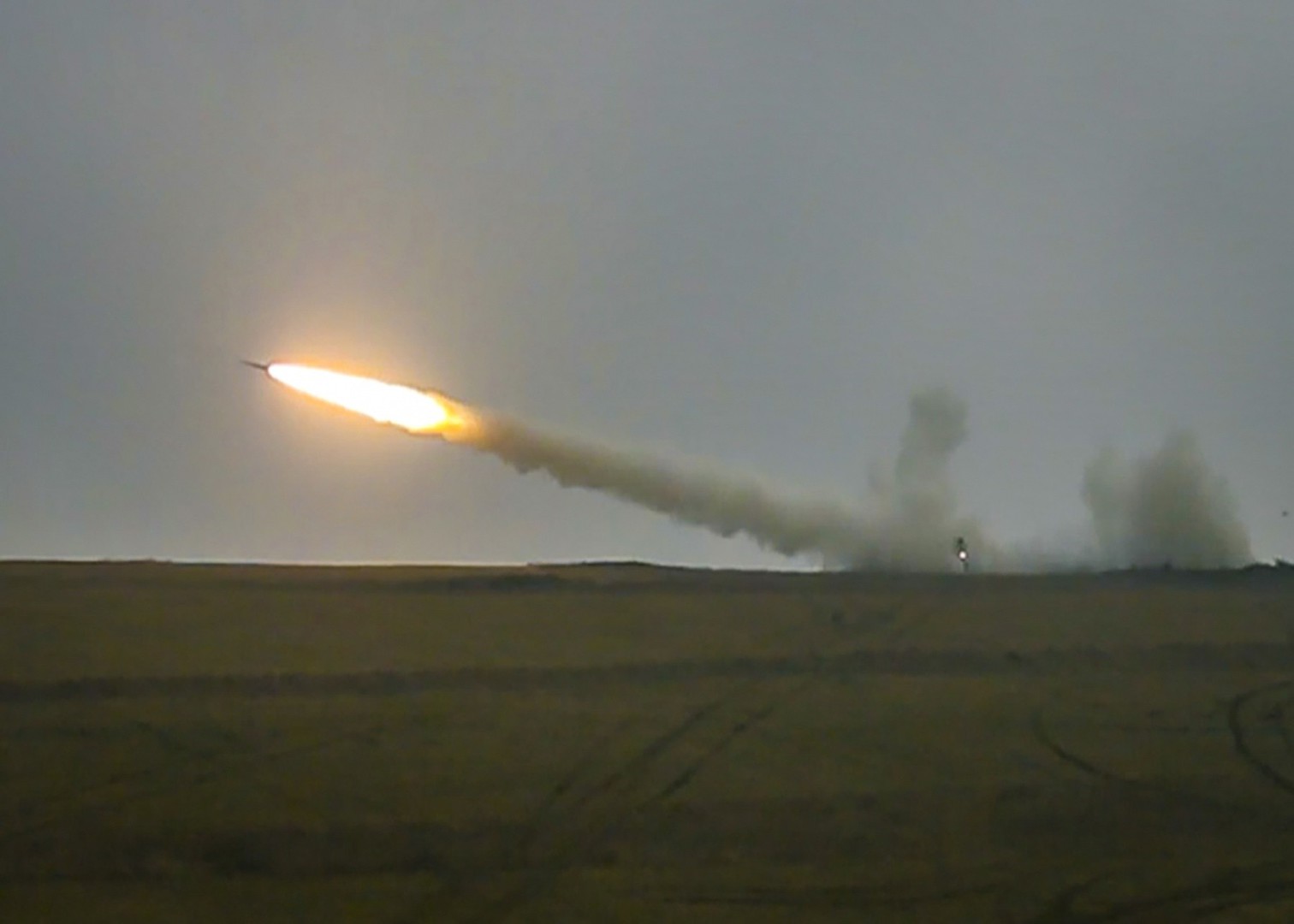JOINT BASE PEARL HARBOR-HICKAM, Hawaii: More than 1,000 personnel from the U.S. Air Force’s active, national guard and reserve components participated in the decade’s first Sentry Aloha exercise Jan. 8-22, at Joint Base Pearl Harbor-Hickam.
The air-to-air combat exercise, designated as Sentry Aloha 20-1, is hosted by the Hawaii Air National Guard and designed to train Airmen from around the country in a joint and interoperable venue on a large scale.
By incorporating more than 35 aircraft, the participating units demonstrated their abilities to equip, launch, engage, refuel and monitor warfighters within the training airspace.
California Air National Guard F-15 Eagles, assigned to the 194th Fighter Squadron, teamed up with the local ‘Hawaiian Raptors,’ a total-force unit comprised of the Hawaii ANG’s 199th FS and active duty’s 19th FS, in a series of training sorties. Together, they practiced combat scenarios against this iteration’s ‘aggressors,’ the F-16 Fighting Falcons from the 18th Aggressor Squadron based out of Eielson Air Force Base, Alaska.
“When you put Eagles and Raptors together in air-to-air combat, we basically build on each other’s strength,” said Lt. Col. Pete Weidner, 144th Fighter Wing alert commander, “and it’s more than one plus one equaling two – it’s more like one plus one equals five.”
The 128th Air Refueling Wing’s KC-135 Stratotankers from General Mitchell Air National Guard Base, Wisconsin, also provided a pivotal warfighting role. Tanker aircraft provided in-air refueling to all three fighter jets. As pilots performed battle tactics, command information was channeled through an E-3 Sentry, which monitored aircraft activity within the battlespace. The airborne warning and control aircraft is operated by aircrew from the 960th and 970th Airborne Air Control Squadrons, from Tinker Air Force Base, Oklahoma.
Flying squadrons rely on mass-training opportunities such as Sentry Aloha to test and improve warfighting skills with partnered units to ensure air superiority in any possible conflict. Mission planners consider every possible variable when designing exercise details to include transportation, logistics, maintenance, weather, scheduling, health requirements, fighter capabilities and more.
“Sentry Aloha provides a unique opportunity for ‘fourth-gen’ units to operate in ‘5th gen’ fighter aircraft integration with the F-22 Raptors,” said Lt. Col. Matthew Ohman, Sentry Aloha exercise director. “Fighter integration in dissimilar air combat, simply put, is when they operate together and are on the same team, they achieve better results than alone.”
While the primary goal of Sentry Aloha is to develop proficiencies of fighter pilots, the professional development of Airmen of every level is necessary in order for the exercise to become a complete success.
Airman 1st Class Nate Johnsen, a 128th ARW maintainer, discovered how the exercise environment provides more experience than just his drill weekends.
“I’m a traditional guardsman back home,” Johnsen said. “So being out here in a deployment situation is more interesting because you have one or two (Stratotankers) going out every day.”
With a seemingly endless body of water surrounding Hawaii, JB Pearl Harbor-Hickam has been deemed an optimal training location due to its unique geography and expansive base resources.
“The location has perfect weather for flying, in excess of 300 days a year,” Weidner said. “You get great training.”











